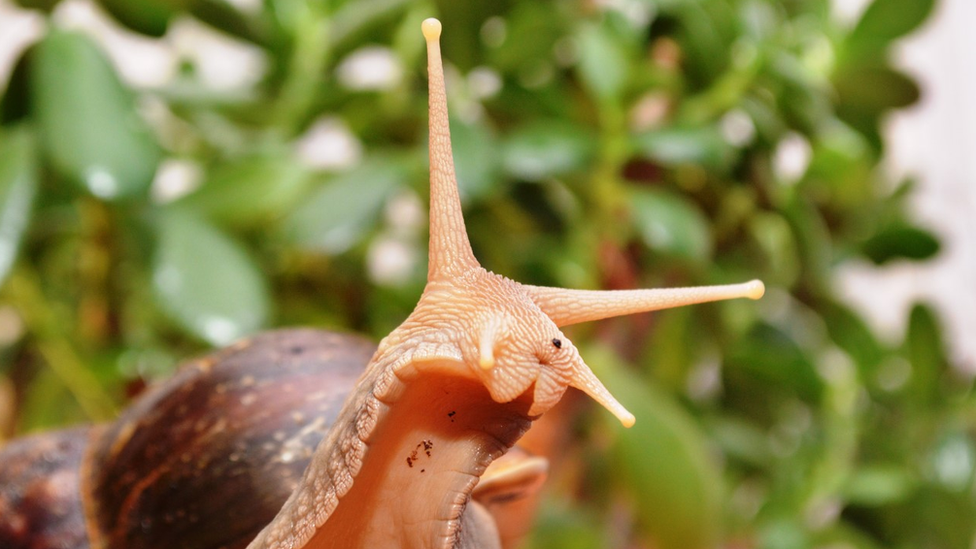Scientists find hairy snail in 99 million year old amber
- Published
- comments
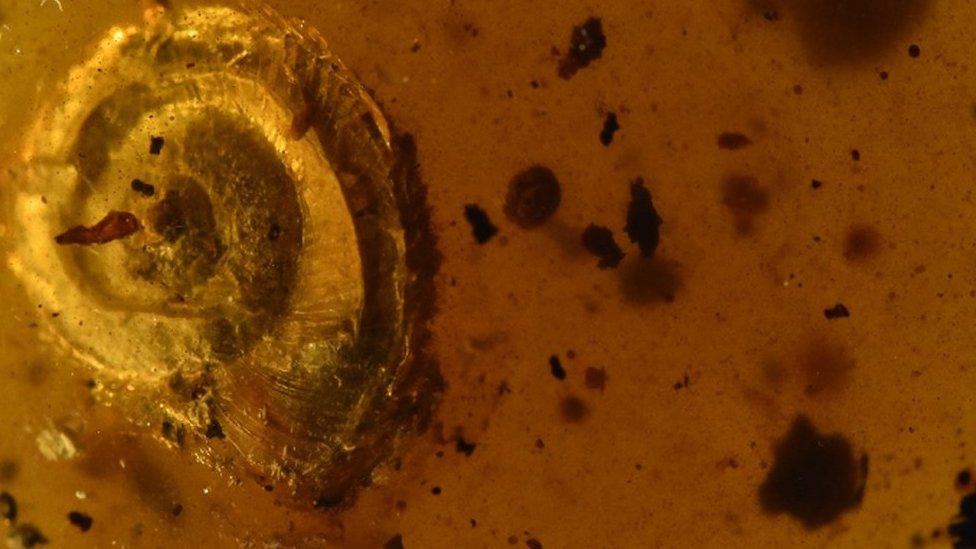
The snail was trapped inside this amber millions of years ago, and only found recently by researchers
A small snail - around 2 and half cm long - has been found in 99 million year old amber.
It was found preserved inside the amber - which means it has been trapped in one piece inside the amber for millions of years.
Researchers found the snail had tiny hairs on its shell - the same as some snails we have around today.
The snail was found in Burma, in Myanmar, where another eight species of tropical land snail have been discovered.
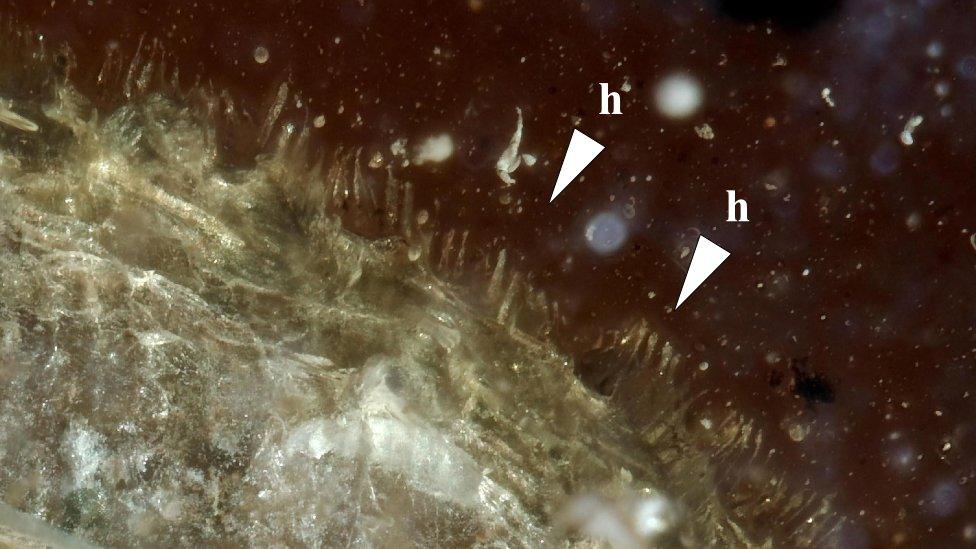
Can you spot the tiny hairs? Dr Adrienne Jochum from the Senckenberg Society for Natural Research has been looking at what this means
The evolution of hairy snails
Archaeologists and scientists found the snails in Burma had tiny hairs on their shells.
These snails date back to the Mesozoic period, which is between 252 to 66 million years ago. Our shelled friends have been around for a long time!
Tiny hairs can still be found on snails today. The hairs help them absorb water and cling to plants.
Researchers say these new discoveries show that snails evolved over time to have hairs on their shells.
This means millions of years ago, the snails born hairy tended to live longer than the non-hairy snails. The hairyness would have been passed onto snails all the way up to the modern day, because the non-hairy snails died out.
This process is called natural selection, which means the process by which an animal or plant etc changes over time in response to changes in the environment, or competition between animals.
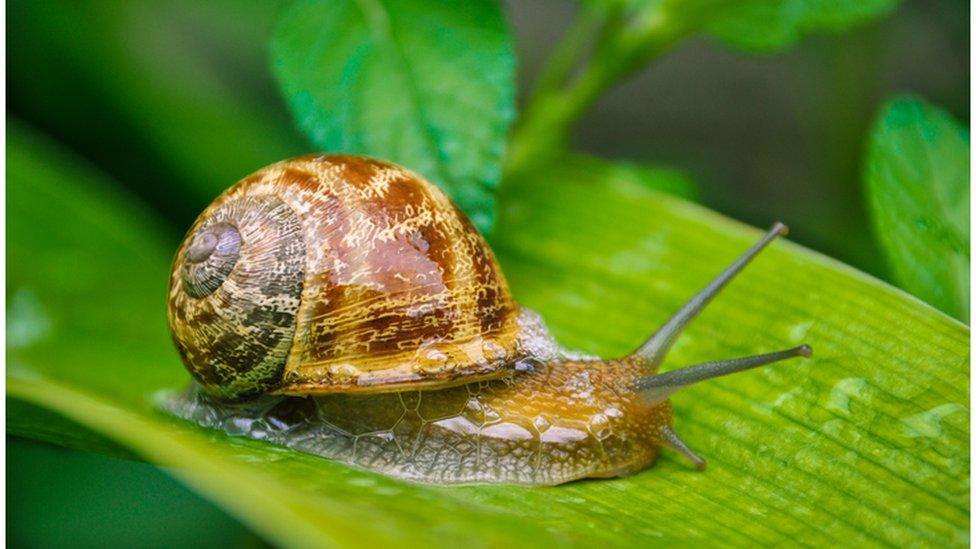
The earliest snails date back to around 500 million years ago
How did the snail end up in amber?
Amber is made from tree resin - a sticky substance that leaks out of trees.
The resin is antiseptic, which protects tree bark from bacteria and fungi.
Resin leaks, then becomes solid, and becomes amber - It can then trap small bugs and creatures that might have got caught in the stickiness.
These bugs then remain completely intact because of the solid amber. The amber also does not have any water in it, which means things can't decompose inside.
It's quite common for small bugs to get trapped in amber - like this armoured spider!
- Published7 March 2022
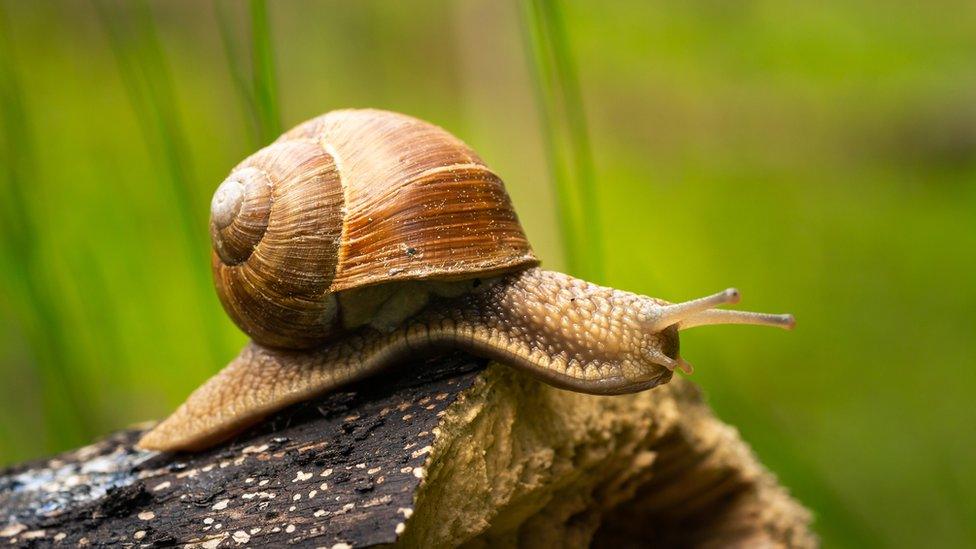
- Published14 July 2022
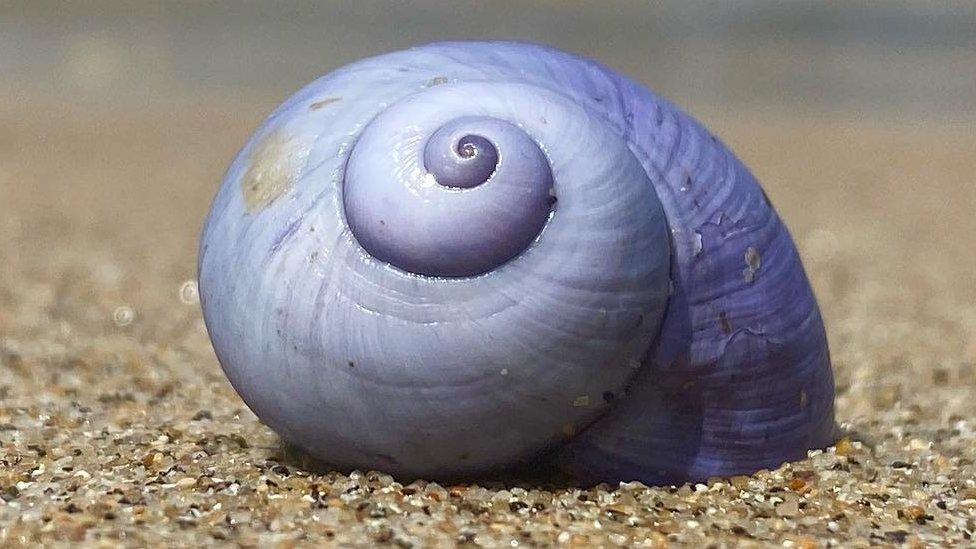
- Published21 July 2022
